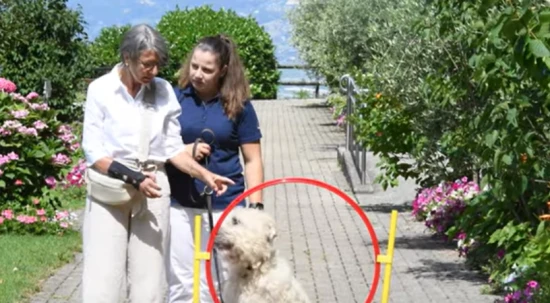What are the potential benefits of canine-assisted therapy?
Working with animals can help patients on both a physical and psychological level. Through the presence of the dog, specific activities can be offered with the aim of improving the health but also the quality of life of patients. The presence of the animal brings an additional motivation that pushes the patient to excel.
The interaction with the dog also aims at facilitating the patient's acceptance of their disability and helping them to regain their self-confidence. The mediator dog provides comfort to the patient. The patient enjoys having a companion while forgetting their daily worries, pain and discomfort. The dog, as a non-judgemental and benevolent creature, mentally supports the patient and can help to regain this need for fulfilment.
For neurological disorders, canine-assisted therapy helps train the voice, mindfulness, balance, locomotion and upper limb mobility.





